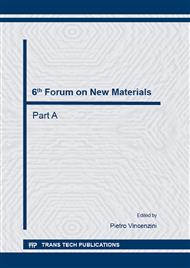p.41
p.50
p.56
p.61
p.65
p.70
p.76
p.82
p.90
Direct Methanol Fuel Cell Stack Design and Test in the Framework of DURAMET Project
Abstract:
Direct methanol fuel cell stacks, with different architectures have been developed. A fuel cell planar stack, operating in passive mode, has been designed for portable application. The device consists of 10 cells, with nominal power of 1.00 – 2.42 W, single cell active area of 4.85 cm2, nominal current of 1.00 A, at room pressure and temperature. Two printed circuit boards have been chosen to clamp and support the MEA and to electrically connect the active areas via conductive pathways. To investigate the stack performance, 4 different boards with different feeding holes shape have been designed. For high temperature operation purpose, a device with “stacked” configuration has been designed and manufactured. Operating parameters are: nominal power of 150W, single cell active area of 100 cm2, nominal current of 25 A, cell number of 10. Promising results have been obtained both for APU and portable applications.
Info:
Periodical:
Pages:
65-69
Citation:
Online since:
October 2014
Price:
Сopyright:
© 2014 Trans Tech Publications Ltd. All Rights Reserved
Share:
Citation:


